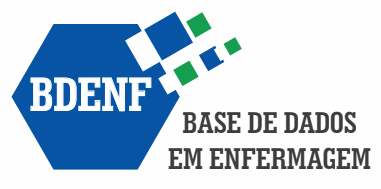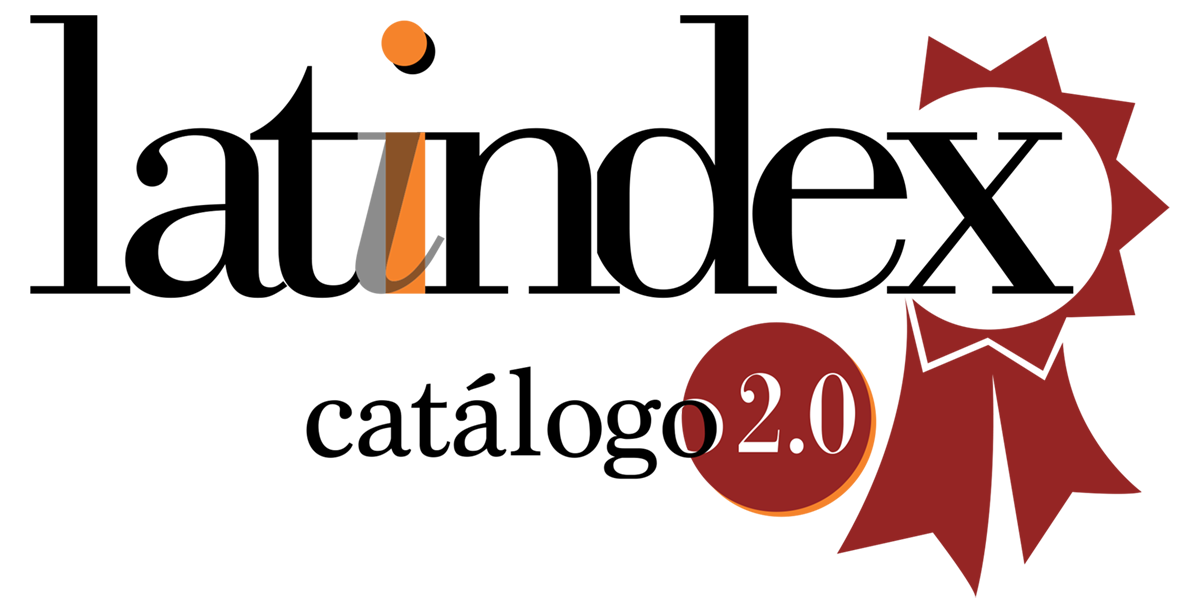Fatores de risco para mediastinite após revascularização do miocárdio:
revisão integrativa
DOI:
https://doi.org/10.5935/1415-2762.20150076Palavras-chave:
Mediastinite, Revascularização Miocárdica, Cirurgia Torácia, Fatores de RiscoResumo
Esta revisão integrativa da literatura teve como objetivo identificar os fatores de risco relacionados à ocorrência de mediastinite em pacientes adultos submetidos à cirurgia de revascularização do miocárdio. Para a busca dos estudos primários, foram utilizadas as bases de dados Medline, CINAHL, LILACS e EMBASE. A amostra foi constituída por 18 estudos. Os fatores de risco mais frequentemente identificados foram diabetes mellitus (DM) e obesidade, seguidos por reintervenção cirúrgica, doença pulmonar obstrutiva crônica (DPOC) e idade avançada. As evidências permitiram identificar que os fatores de risco mais frequentemente associados à ocorrência de mediastinite foram DM, obesidade, reintervenção cirúrgica, DPOC e idade maior de 65 anos e identificam a necessidade de se investir em pesquisas sobre fatores de risco passíveis de prevenção e controle, ou seja, os relacionados ao procedimento cirúrgico propriamente dito.Downloads
Referências
1. Brasil. Ministério da Saúde. Agência Nacional de Vigilância Sanitária. Sítio cirúrgico: critérios nacionais de infecções relacionadas à assistência à saúde. Brasília: Ministério da Saúde; 2013. Série Segurança do Paciente e Qualidade em Serviços de Saúde, 2.
2. Fernandes AT, Ribeiro N Filho, Oliveira AC. Infecções do sítio cirúrgico. In: Oliveira AC. Infecções hospitalares epidemiologia, prevenção e controle. Rio de Janeiro: Medsi; 2005. p.732.
3. Centers for Disease Control and Prevention (US). Procedure associated events. Surgical Site Infection (SSI) Event. 2010. [Citado em 2013 set 08]. Disponível em: http://www.cdc.gov/nhsn/PDFs/pscManual/9pscSSIcurrent.pdf.
4. Sajia LR. Strategies to reduce deep sternal wound infection after bilateral internal mammary artery grafting. Int J Surg. 2014; 14:S1743.
5. Moraes AAI, Abboud CS, Chammas AZ, Aguiar YS, Mendes LC, Melo Neto J, et al. Long term mortality of deep sternal wound infection after coronary artery bypass surgery. Rev Bras Cir Cardiovasc. 2012; 27(3):377-82.
6. Whittemore R, Knafl K. The integrative review: updated methodology. J Adv Nurs. 2005; 52(5):546-53.
7. Melnyk BM, Fineout-Overholt E. Making the case for evidence-based practice. In: Melnyk BM, Fineout-Overholt E. Evidence-based practice in nursing & healthcare: a guide to best practice. Philadelphia: Lippincot Williams & Wilkins; 2011. p. 3-24.
8. Nobre M, Bernardo W. Prática clínica baseada em evidências. Rio de Janeiro: Elsevier; 2006.
9. Moher D, Liberati A, Tetzlaff J, Altman DG. The PRISMA Group 2009. Preferred reporting items for systematic reviews and meta-analyses: the PRISMA Statement. PLoS Med. 2009; 6(6):e1000097.
10. Ursi ES, Galvão CM. Prevenção de lesões de pele no perioperatório: revisão integrativa da literatura. Rev Latino-Am Enferm. 2006; 14(1):124-31.
11. Itagaki S, Cavallaro P, Adams DH, Chikwe J. Bilateral internal mammary artery grafts, mortality and morbidity: an analysis of 1 526 360 coronary bypass operations. Heart. 2013; 99:849-53.
12. Sá MP, Figueira ES, Santos CA, Figueiredo OJ, Lima RO, Rueda FG, et al. Validation of MagedanzSCORE as a predictor of mediastinitis after coronary artery bypass graft surgery. Rev Bras Cir Cardiovasc. 2011; 26(3):386-92.
13. Al-Zaru IM, Ammouri AA, Al-Hassan MA, Amr AA. Risk factors for deep sternal wound infections after cardiac surgery in Jordan. J Clin Nurs. 2010; 19:1873-81.
14. Ariyaratnam P, Bland M, Loubani M. Risk factors and mortality associated with deep sternal wound infections following coronary bypass surgery with or without concomitant procedures in a UK population: a basis for a new risk model? Interact Cardiovasc Thorac Surg. 2010; 11(5):543-6.
15. Elenbaas TWO, Hamad MAS, Schönberger JPAM, Martens EJ, Zundert AAJV, Van Straten AHM. Preoperative atrial fibrillation and elevated c-reactive protein levels as predictors of mediastinitis after coronary artery bypass grafting. Ann Thorac Surg. 2010; 89:704-9.
16. Magedanz EH, Bodanese LC, Guaragna JC, Albuquerque LC, Martins V, Minossi SD, et al. Risk score elaboration for mediastinitis after coronary artery bypass grafting. Rev Bras Cir Cardiovasc. 2010; 25(2): 154-9.
17. Risnes I, Abdelnoor M, Almdahl SM, Svennevig JL. Mediastinitis after coronary artery bypass grafting risk factors and long-term survival. Ann Thorac Surg. 2010; 89(5): 1502-9.
18. Hoseini MJ, Naseri MH, Teimoori M. Investigation of deep sternal wound infection after coronary artery bypass graft and its risk factors. Pak J Med Sc. 2008; 2(2 Part-I): 251-6.
19. Fakih MG, Sharma M, Khatib R, Berriel-Cass, Meisner S, Harrington S, et al. Increase in the rate of sternal surgical site infection after coronary artery bypass graft: a marker of higher severity of illness. Infect Control Hosp Epidemiol. 2007; 28:655-60.
20. Omran AS, Karimi A, Ahmadi SH, Davoodi S, Marzban M, Movahedi N, et al. Superficial and deep sternal wound infection after more than 9000 coronary artery bypass graft (CABG): incidence, risk factors and mortality. BMC Infect Dis. 2007; 7(112). [Citado em 2013 nov 11]. Disponível em: http://jtcs. ctsnetjournals.org/cgi/reprint/139/3/680.
21. Savage EB, Grab JD, O’Brien OB, Ali A, Okum EJ, Perez-Tamayo A, et al. Use of both internal thoracic arteries in diabetic patients increases deep sternal wound infection. Ann Thorac Surg. 2007; 83:1002-7.
22. Toumpoulis IK, Anagnostopoulos CE, DeRose Jr JJ, Swistel DG. The impact of deep sternal wound infection on long-term survival after coronary artery bypass grafting. Chest. 2005; 127(2): 464-71.
23. Groom RC, Rassias AJ, Cormack JE, DeFoe GE, DioDato C, Krumholz CK, et al. Highest core temperature during cardiopulmonary bypass and rate of mediastinitis. Perfusion. 2004; 19:119-25.
24. Lu JCY, Graysonb AD, Jhaa P, Srinivasana AK, Fabri BM. Risk factors for sternal wound infection and mid-term survival following coronary artery bypass surgery. Europ J Cardio thoracic Surgery. 2003; 23:943-9.
25. Tavolaccia MP, Merlea V, Josseta V, Bouchartb F, Litzlerb PY, Tabley A, et al. Mediastinitis after coronary artery bypass graft surgery: influence of the mammary grafting for diabetic patients. J Hosp Infect. 2003; 55:21-5.
26. Braxton JH, Marrin CAS, McGrath PD, Ross CS, Morton JR, Norotsky M, et al. Mediastinitis and long-term survival after coronary artery bypass graft surgery. Ann Thorac Surg 2000; 70:2004-7.
27. Trick WE, Scheckler WE, Jokars JI, Jones KC, Reppen ML, Smith EM, et al. Modifiable risk factors associated with deep sternal site infection after coronary artery bypass grafting. J Thorac Cardiovasc Surg. 2000; 119:108-14.
28. Wang FD, Chang C. Risk factors of deep sternal wound infections in coronary artery bypass graft surgery. J Cardiovasc Surg. 2000; 41(5):709-13.
29. Rebmann T, Kohut K. Preventing mediastinitis surgical site infections: executive summary of the Association for Professionals in Infection Control and Epidemiology’s elimination guide. Am J Infect Control. 2011; 39(6):529-31.
30. Ahmed D, Cheema FH, Ahmed YI, Schaefle KJ, Azam SI, Sami SA, et al. Incidence and predictors of infection in patients undergoing primary isolated coronary artery bypass grafting: a report from a tertiary care hospital in a developing country. J Cardiovasc Surg. 2011; 52 (1):99-104.
31. Matros E, Aranki SF, Bayer LR, McGurk S, Neuwalder J, Orgill DP. Reduction in incidence of deep sternal wound infections: random or real? J Thorac Cardiovasc Surg. 2010; 139(3):680-5.
32. Diez C, Koch D, Kuss O, Silber RE, Friedrich I, Boergermann J. Risk factors for mediastinitis after cardiac surgery – a retrospective analysis of 1700 patients. J Cardiothorac Surg. 2007; 2:23-8.
33. Ennker IC, Malkoc A, Pietrowski D, Vogt PM, Ennker J, Albert A. The concept of negative pressure wound therapy (NPWT) after poststernotomy mediastinitis – a single center experience with 54 patients. J Cardiothorac Surg. 2009; 4(5):12-8.
34. Grauhan O, Navasardyan A, Hofmann M, Müller P, Hummel M, Hetzer R. yanoacrylate sealed Donati suture for wound closure after cardiac surgery in obese patients. Interact Cardiovasc Thorac Surg. 2010; 11: 763-7.
35. Abboud CS1, Wey SB, Baltar VT. Risk factors for mediastinitis after cardiac surgery. Ann Thorac Surg. 2004; 77(2): 676-83.
36. Gude MJL, Juan RS, Aguado JM, Maroto L, López‐Medrano F, Romero JMC, et al. Case control study of risk factors for mediastinitis after cardiovascular surgery. Infect Control Hosp Epidemiol. 2011; 27(12). [Cited 2013 Oct 10]. Available from: http://www.jstor.org/stable/10.1086/iche.2006.27.issue-12.
37. Vivacqua A, Koch CG, Yousuf AM, Nowicki ER, Houghtaling PL, Blackstone EH, et al. Morbidity of bleeding after cardiac surgery: is it blood transfusion, reoperation for bleeding, or both? Ann Thorac Surg. 2011; 91: 1780-90.
38. Camponogara S, Soares SGA, Silveira M, Viero CM, Barros CS, Cielo C. Percepção de pacientes sobre o período pré-operatório de cirurgia cardíaca. REME - Rev Min Enferm. 2012; 16(3): 382-90.
39. Umann J, Guido LA, Linch GFC, Freitas EO. Enfermagem perioperatória em cirurgia cardíaca: revisão integrativa da literatura. REME - Rev Min Enferm. 2011; 15(2): 275-81.
Downloads
Publicado
Edição
Seção
Licença
Copyright (c) 2015 Reme: Revista Mineira de Enfermagem

Este trabalho está licenciado sob uma licença Creative Commons Attribution 4.0 International License.





































